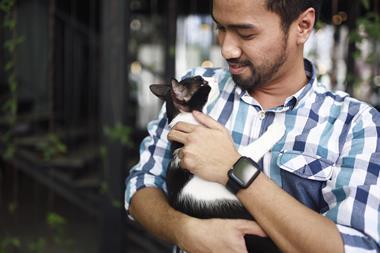It’s official, we’re a nation of pet lovers. Be it for companionship, security or simply because they turned up on a doorstep and never left, Britons are wild about animals, so much so the Pet Food Manufacturers Association estimates that 43% of households now share their home with a domestic animal.
Of the 27 million pets in the UK, dogs and cats are the most popular, making up 23% and 19% of all pets respectively, with indoor fish (10%), outdoor fish (6%) and rabbits (2.6%) rounding off the top five.
According to Nestlé Purina development organisation director Andrew Harding, as well as being in abundance, pet owners are also great customers for c-stores. “On average pet food shoppers visit their local convenience store once a week more than shoppers who don’t buy pet food, and also spend 82% more (HIM CTP 2010),” he says. “Nearly £200m-worth of pet food was sold in the convenience sector in the past 12 months (IRI January 1, 2011, convenience).”
Retailer’s view
“Our area has a lot of dog-lovers so it’s important to have a good range. We stock a big selection of treats and chews as they’re very popular with customers, especially ones that help dogs’ teeth.
“I’ve noticed a move towards single-serve pouches in cat food and we’ve changed our range so that we stock fewer cans and more pouches. We do sell some single-serve cans of dog food, but generally dog owners buy bags of dry food rather than large cans.”
James Ratcliffe, Spar Accrington, Lancashire
Mars Pet Care convenience trading director Wayne Tessier agrees that the category was a massive success last year. “The pet care market emerged as one of the success stories for retailers during 2010, and the figures speak for themselves, with the current market worth more than £2bn in annual sales, and continuing to show growth,” he says.
Wagg pet food trade sales director Ben Anderson explains why the market has been so successful: “C-stores are often the first place pet owners turn when they run out of pet food, and the cold weather we experienced during this winter has given further encouragement to consumers to shop for their pet food locally.”
Even though pet owners are spending more than their non-pet owning counterparts, there doesn’t seem to be any temptation to reduce expenditure when money gets tight. “Sales data shows that the economic environment hasn’t deterred pet owners from spending a little more for an indulgent food,” says Harding.
Tessier explains that volume sales may not increase in the future, but value is certainly on the up. “Sales growth in the pet care category will not be fuelled by an increase in pet population this remains largely static,” he says. “Growth will come as consumers seek out ever better quality foods for their pet, trading up to super-premium offerings to treat their pets to the very best. This move towards premiumisation has resulted in strong growth in the super-premium pet food categories.”
Read more:
Cash in: Pet care - Meal for one
Cash in: Pet care - An extra treat
Cash in: Pet care - Range advice
Cash in: Pet care - Ones to watch



























No comments yet